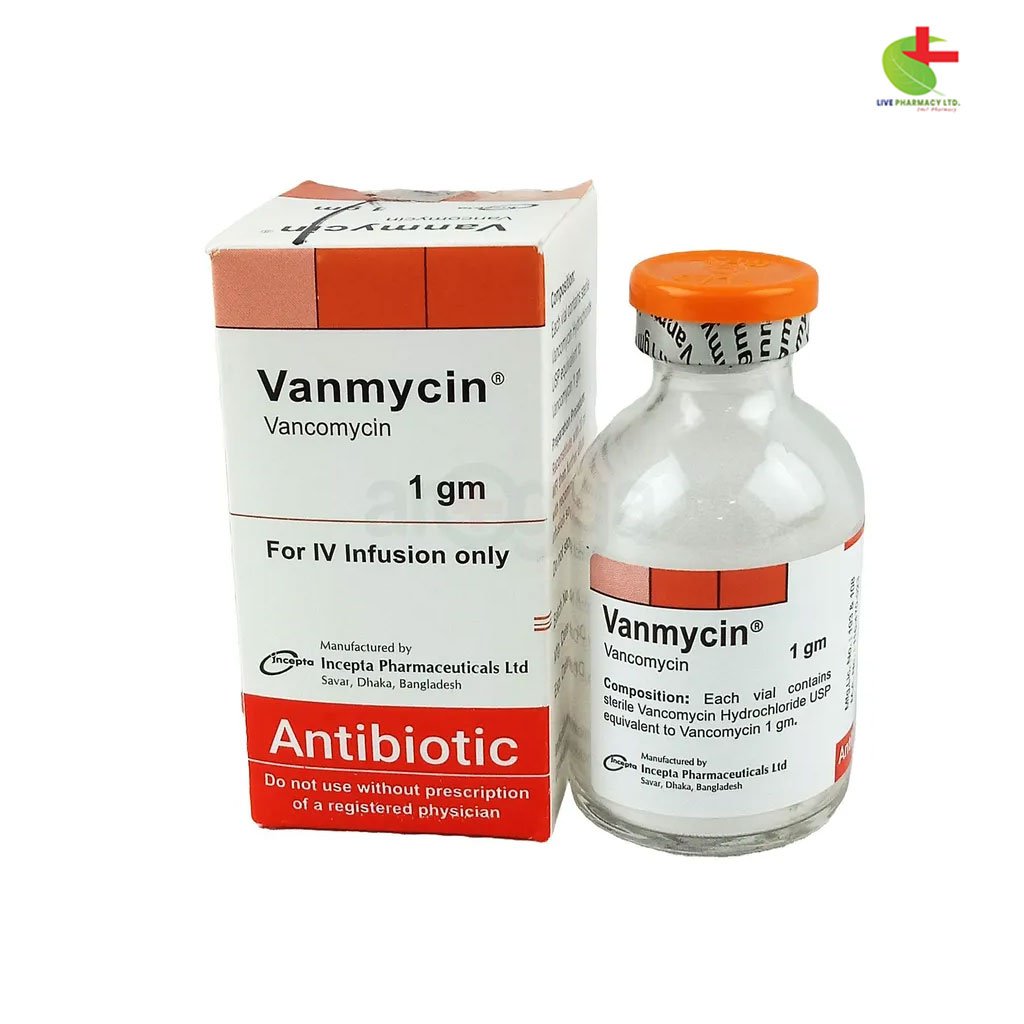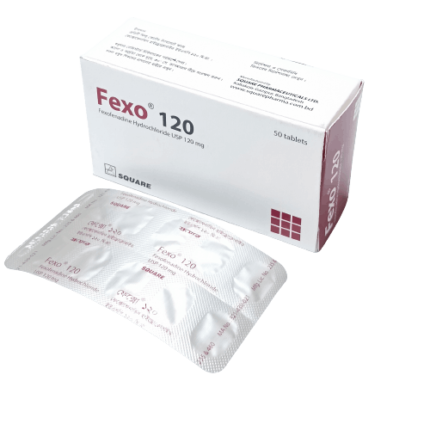Vanmycin 500
480.00৳ Injection
- Vanmycin is a potent antibiotic indicated for treating severe, potentially life-threatening infections resistant to less toxic alternatives like penicillins and cephalosporins.
- Effective against staphylococcal infections, it is also used for endocarditis treatment and prevention during surgical procedures.
- It works by inhibiting cell wall synthesis, making it critical for infections such as osteomyelitis and pneumonia.
- Caution is advised in patients with renal impairment, and regular monitoring is essential for safe use.
 Brand
Brand
|
Incepta Pharmaceuticals Ltd |
|---|---|
 Generics
Generics
|
Vancomycin Hydrochloride |
 Type
Type
|
IV Infusion |
Indications
Vanmycin is prescribed for serious infections that are potentially life-threatening and cannot be effectively treated with other less toxic antimicrobial agents, including penicillins and cephalosporins.
This medication is particularly beneficial in managing severe staphylococcal infections in patients who are unable to tolerate or have not responded to penicillins and cephalosporins or those infected with staphylococci resistant to other antibiotics.
Vanmycin is also utilized in treating endocarditis and serves as a preventive measure against endocarditis for patients undergoing dental or surgical interventions.
Its efficacy has been established in treating various staphylococcal infections, such as osteomyelitis, pneumonia, septicemia, and soft tissue infections.
Consult your registered healthcare professional before using this medication.
Pharmacology
Vancomycin exerts its action by binding tightly to the D-alanyl-D-alanine portion of the cell wall precursor. This binding disrupts glycopeptide polymerization, leading to an immediate halt in cell wall synthesis and subsequent damage to the cytoplasmic membrane.
Dosage & Administration
For adults, a concentration of no more than 5 mg/ml and infusion rates not exceeding 10 mg/min are recommended. In specific cases requiring fluid restriction, concentrations up to 10 mg/ml may be used.
For Patients with Normal Renal Function:
- Adults: The typical daily dose is 2 gm, administered in 4 or 2 divided doses.
- Children: The total daily dose is 40 mg/kg, divided into 4 doses.
- Infants and Neonates: An initial dose of 15 mg/kg is recommended, followed by 10 mg/kg every 12 hours for the first week, and then every 8 hours until one month.
For Patients with Impaired Renal Function and the Elderly: Dosage adjustments are necessary for individuals with impaired renal function. In premature infants and elderly patients, a more significant reduction in dosage may be required due to declining renal function. If creatinine clearance can be accurately assessed, the following dosage chart can be used:
| CrCl (ml/min) | Vancomycin Dose (mg/24 h) |
|---|---|
| 100 | 1545 |
| 90 | 1390 |
| 80 | 1235 |
| 70 | 1080 |
| 60 | 925 |
| 50 | 770 |
| 40 | 620 |
| 30 | 465 |
| 20 | 310 |
| 10 | 155 |
The initial dose should not be less than 15 mg/kg, even in patients with mild to moderate renal impairment. The chart does not apply to functionally anephric patients. For these individuals, an initial dose of 15 mg/kg of body weight should be administered to achieve prompt therapeutic serum concentrations. The maintenance dose is typically 1.9 mg/kg/24 h. Since individual maintenance doses of 250-1,000 mg are convenient, administering one dose every few days instead of daily may be appropriate for patients with significant renal impairment. In cases of anuria, a dose of 1000 mg every 7-10 days is suggested. Intermittent infusion is the preferred method of administration; intraperitoneal use is not advised.
Capsule Dosage:
- Adults: The standard daily dosage for antibiotic-associated pseudomembranous colitis caused by C. difficile and staphylococcal enterocolitis ranges from 125 to 500 mg, taken orally every 6 to 8 hours for 7 to 10 days.
- Pediatrics: The typical daily dosage is around 40 mg/kg, divided into 3 or 4 doses for 7 to 10 days orally, with a maximum daily limit of 2 g.
Consult your registered healthcare professional before using this medication.
Contraindications
Vancomycin is contraindicated for patients with known hypersensitivity to the drug.
Side Effects
Vanmycin is generally well tolerated. However, rapid infusion may lead to anaphylactic reactions such as hypotension, wheezing, difficulty breathing, urticaria, or pruritus. Rapid infusion can also cause flushing of the upper body (“red neck”) and chest or back pain and muscle spasms. These reactions typically resolve within 20 minutes but may last several hours. Such events are rare if Vanmycin is administered slowly over 60 minutes.
Pregnancy & Lactation
The potential for fetal harm from Vancomycin is not well understood. It should only be administered during pregnancy if clearly necessary, and blood levels must be monitored carefully to minimize the risk of fetal toxicity.
Vancomycin Hydrochloride is excreted in breast milk, so caution is advised when administering it to nursing mothers. It is unlikely that a nursing infant will absorb a significant amount of Vancomycin from the gastrointestinal tract.
Precautions & Warnings
Patients with borderline renal function and those over 60 years should undergo regular auditory function tests and monitoring of Vanmycin blood levels. All patients receiving the drug should have periodic hematological studies, urinalysis, and renal function assessments.
Vanmycin can irritate tissues and cause necrosis at the injection site if administered intramuscularly. It must be infused intravenously. Many patients experience injection site pain and thrombophlebitis, which can be severe.
Prolonged use of Vanmycin may lead to the overgrowth of non-susceptible organisms, necessitating careful patient observation. If a superinfection arises during treatment, appropriate actions should be taken. Rarely, cases of pseudomembranous colitis due to C. difficile have been reported in patients receiving intravenous Vanmycin.
Overdose Effects
Supportive care is recommended, with an emphasis on maintaining glomerular filtration. Vanmycin is not effectively removed from the blood through hemodialysis or peritoneal dialysis. Haemoperfusion with Amberlite resin XAD-4 has shown limited efficacy.
Therapeutic Class
Other antibiotic.
Storage Conditions
Store in a cool, dry place away from light. Keep out of reach of children.













Reviews
There are no reviews yet.